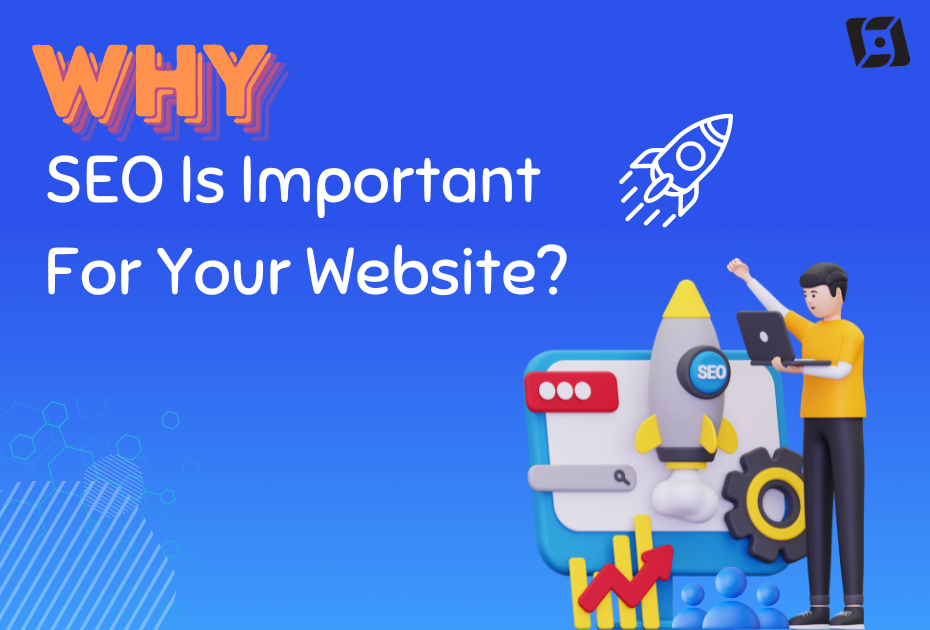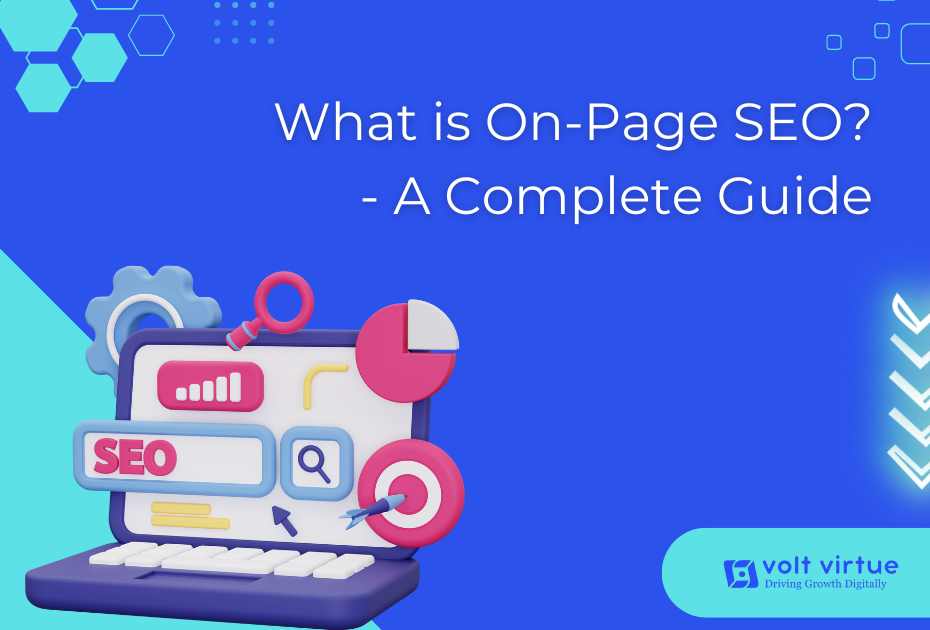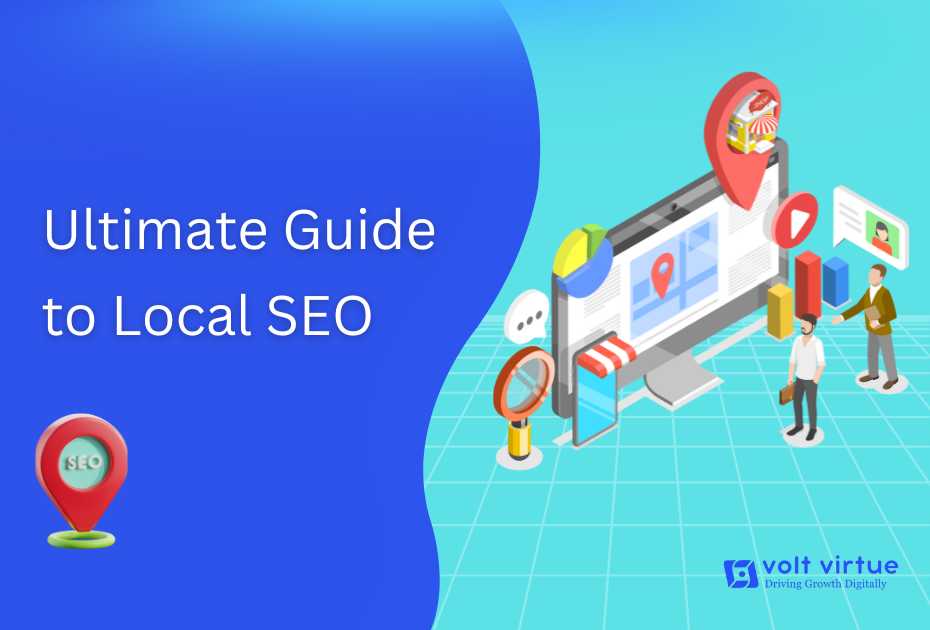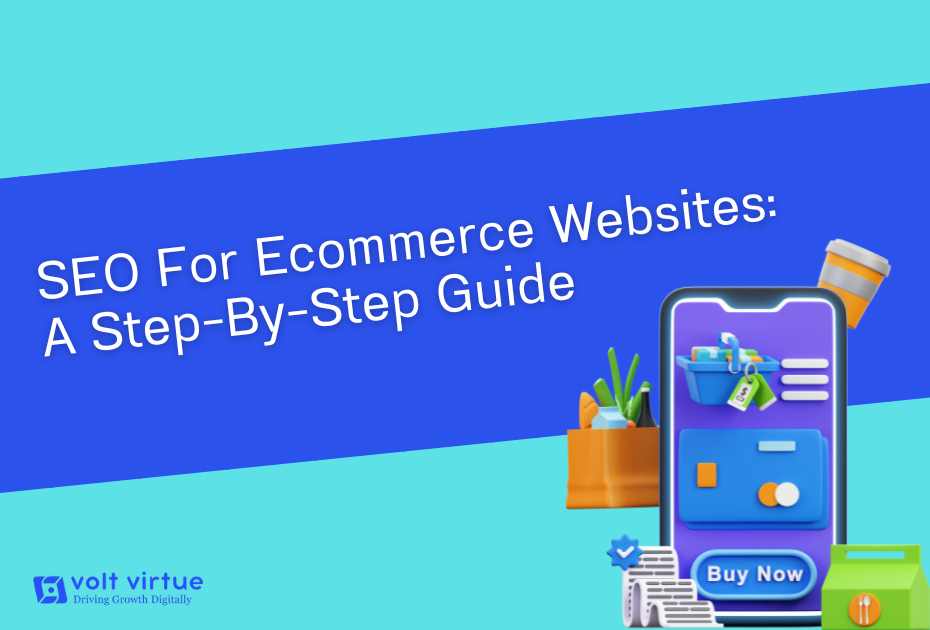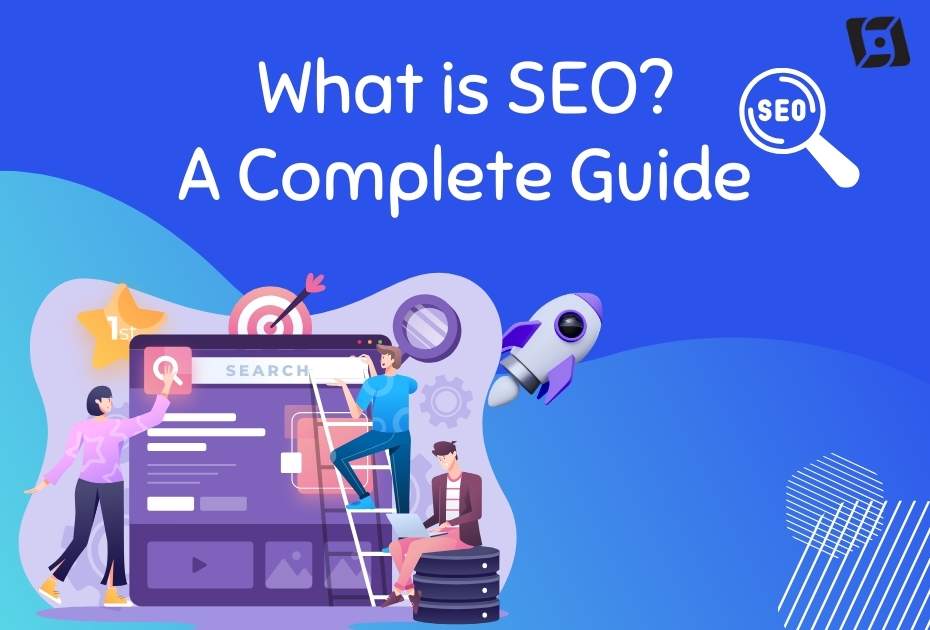
In today’s dynamic digital world, search engine optimization (SEO) is far more than just a trendy term—it’s a critical strategy for any business striving to succeed online. Whether you’re launching a startup or looking to boost an established brand, mastering SEO is essential for achieving online success.
This comprehensive guide offers an in-depth exploration of SEO. You’ll uncover what SEO truly involves, its vital role in digital marketing, the latest ranking factors, and much more.
What is SEO?
In the digital realm, where every click and scroll count, Search Engine Optimization (SEO) serves as a guiding light for businesses and marketers. However, what exactly is SEO, and why has it become the foundation of online success?
SEO, or Search Engine Optimization, is the practice of enhancing your website’s visibility and appeal to search engines like Google and Bing.
Search Engine Optimization (SEO) is the practice of boosting organic traffic on Search Engine Results Pages (SERPs), often referred to as organic search or listings. To achieve top rankings for your target keywords, implementing effective SEO strategies is essential for improving your position in search results.
By implementing SEO strategies, you can attract more visitors to your website, increasing the likelihood of conversions. Search engines evaluate various elements, such as keywords, internal links, image alt text, title tags, and backlinks. These factors, along with your site’s structure, design, and other off-site elements, all contribute to how well your site ranks on search engine results pages (SERPs).
Search Engine Optimization: The Basics
Search engines like Google and Bing use bots to crawl web pages, gathering information and storing it in an index—a massive virtual library. In this analogy, the search engine acts like a librarian, recommending the best web pages to help you find the information, products, or services you need online.
Algorithms analyze the pages in this index, considering hundreds of factors to determine the order in which pages appear in search results for every possible query worldwide. Extending the library analogy, the algorithm has “read” every web page and can pinpoint the exact content that meets your needs.
SEO success factors encompass the entire user experience when recommending web pages. It’s not just about the information on the page but also the overall quality of your experience—how quickly the page loads, the imagery used, the structure of the information, and more. Having great content is crucial, but it also needs to be delivered effectively.
Adding to the complexity of SEO, search engine algorithms—like Google’s—are constantly evolving. These updates aim to enhance user experience, deliver better information, and adapt to changing search behaviors. Staying up-to-date on the latest search trends and algorithm changes is essential; otherwise, a once top-performing website may fall behind if it fails to meet new standards.
Moreover, search engines are increasingly trying to provide users with the information they need directly on the search page, rather than directing them to external websites. This means businesses and their SEO experts must be more creative in attracting searchers to their sites or ensuring their brand is visible on SERPs.
Unlike paid search advertising, such as Google Ads, you can’t pay search engines for higher organic search rankings. SEO experts, along with writers, designers, and developers, must work hard to create the best possible digital experiences to achieve success.
Core Elements of SEO: On-Page SEO, Off-Page SEO, and Technical SEO
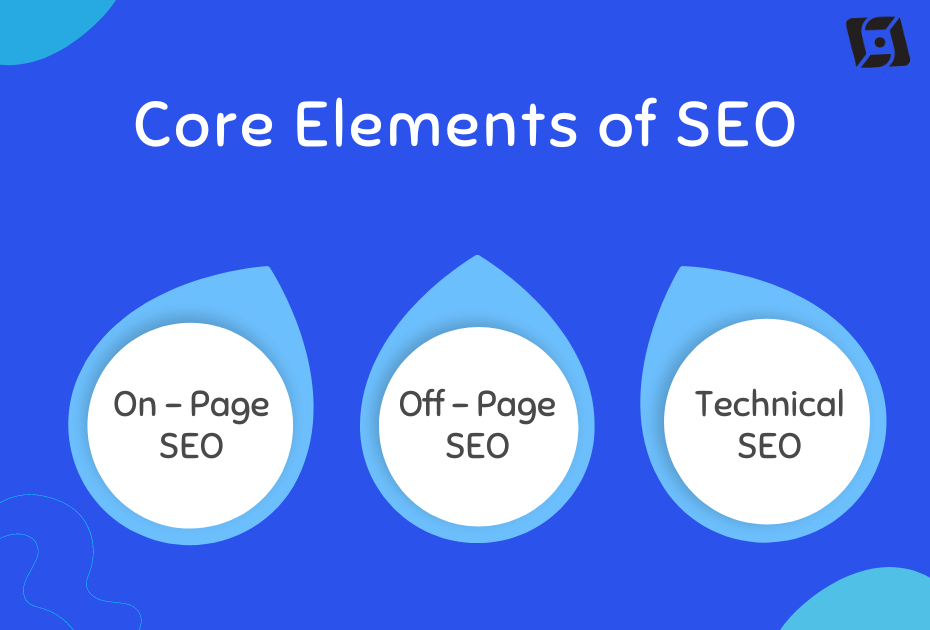
When optimizing your website for Google, there are three crucial types of SEO to focus on: on-page SEO, off-page SEO, and technical SEO.
On-Page SEO
On-page SEO involves elements within your website that help search engines and readers understand what your page is about. This includes image alt text, keyword usage, meta descriptions, H1 tags, URL structure, and internal linking. Since these elements are all within your site, you have the most control over on-page SEO.
Off-Page SEO
Off-page SEO indicates how popular and valuable your page is through external signals, most notably backlinks—links from other sites to your own. The quantity and quality of backlinks can significantly impact a page’s ranking. Generally, a page with 100 relevant backlinks from credible sites will rank higher than a page with 50 relevant backlinks from credible sites or 100 irrelevant backlinks.
Technical SEO
Technical SEO deals with the backend elements of your site that affect its performance and indexing. While still within your control, it can be more complex and less intuitive. It involves optimizing site speed, mobile-friendliness, site architecture, and other technical aspects to ensure search engines can crawl and index your site effectively.
Why Is SEO Important?
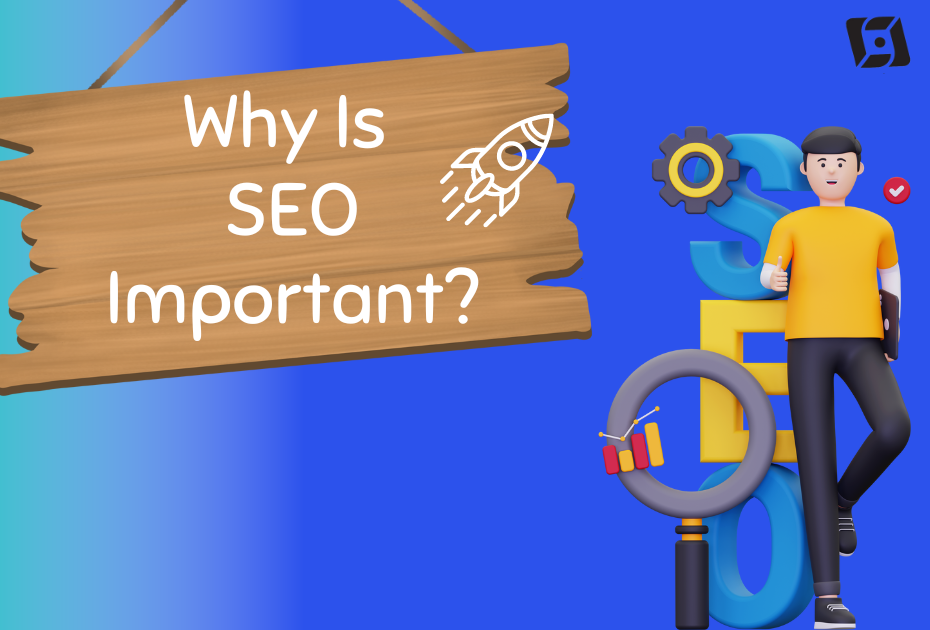
Search engine optimization (SEO) is a critical component of digital and overall marketing because people perform trillions of search queries each year. Many of these searches are focused on discovering products and services or seeking information that could lead to a sale or other commercial interaction. Search often serves as the primary source of online traffic for brands, complementing other marketing strategies and tactics.
Achieving higher search rankings than your competitors can significantly affect your business’s bottom line. In many cases, falling out of the top three search results—especially for local queries—can make your business virtually invisible.
SEO is the cornerstone of a comprehensive marketing strategy. By understanding what your website users are searching for, you can tailor your marketing efforts accordingly. SEO provides the insights needed to effectively market your business and drive success.
SEO Strategies: Black Hat vs. White Hat
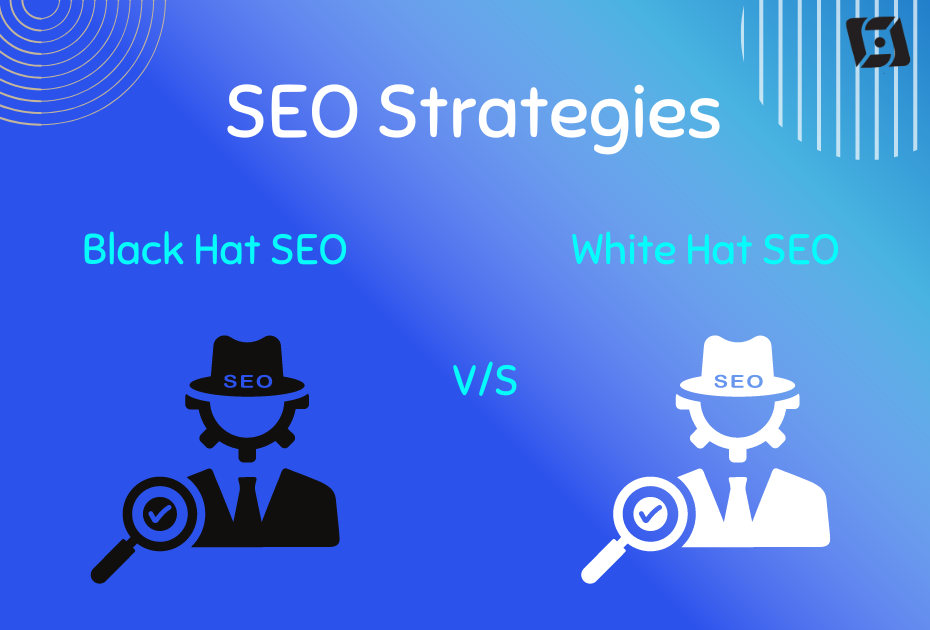
What is Black Hat SEO?
Black hat SEO includes practices that go against search engines’ guidelines and terms of service. While these tactics may temporarily boost a page’s ranking on search engine results pages (SERPs), they can lead to penalties or even a ban from search engines and affiliate sites. Common black hat SEO techniques include:
- Keyword Stuffing: Excessively using keywords on a page to manipulate rankings.
- Link Manipulation: Using unethical methods to acquire backlinks.
- Duplicate Content: Creating articles, pages, or site landing pages with copied content.
Word of Caution: While black hat SEO might yield short-term gains, its risks are significant. Google’s algorithms are continually evolving, and penalties can severely impact your site’s traffic and rankings.
What is White Hat SEO?
White hat SEO refers to techniques that comply with search engines’ guidelines and focus on ethical practices. As the opposite of black hat SEO, white hat methods include:
- Creating Original, High-Quality Content: Providing valuable and unique content for users.
- Developing a Mobile-Friendly Website: Ensuring a seamless experience across all devices.
- Using Clear, Keyword-Rich Meta Tags: Enhancing meta descriptions and titles to improve search visibility.
White hat SEO helps improve your search rankings while maintaining your website’s integrity and ensuring long-term success.
Benefits of SEO for your Business

SEO, or Search Engine Optimization, is more than just a way to boost your website’s visibility on search engines like Google and Bing. It’s a crucial strategy that can bring significant benefits to your business in several ways:
Increased High-Quality Traffic
SEO attracts more organic traffic to your website, often from users actively searching for products, services, or information related to your business. This traffic is typically more targeted and has a higher likelihood of converting.
Enhanced Credibility and Trust
Most people consider websites that rank higher in search results to be more reliable and credible. This perception can be a major advantage, helping both new and established businesses build a strong brand reputation.
Improved User Experience
A well-optimized website not only achieves better rankings but also delivers an enhanced user experience. This includes faster load times, mobile-friendly design, and content that aligns with user search intent. A positive user experience is key to keeping visitors engaged on your site.
Cost-Effectiveness
Unlike paid advertising, the traffic gained through SEO is organic and free. Although SEO requires an initial investment of time and resources, it provides a sustainable source of traffic without the ongoing costs associated with pay-per-click (PPC) advertising.
Long-Term Strategy
SEO efforts may take a few months to yield noticeable results, but the benefits are long-lasting. Over time, your investment in SEO will continue to grow, leading to increased results and a better return on investment (ROI) as your website gains more authority and relevance.
Adaptability to Market Changes
Based on modifications to the market, updates to algorithms, and changes in user behavior, SEO techniques can be modified and improved. This flexibility ensures your business stays competitive and relevant in the dynamic digital landscape.
Measurable Results
Tools like Google Analytics and Google Search Console allow you to track the performance of your SEO efforts. This data helps you measure your return on investment (ROI) and make informed decisions to further optimize your strategy.
The Fundamentals of SEO
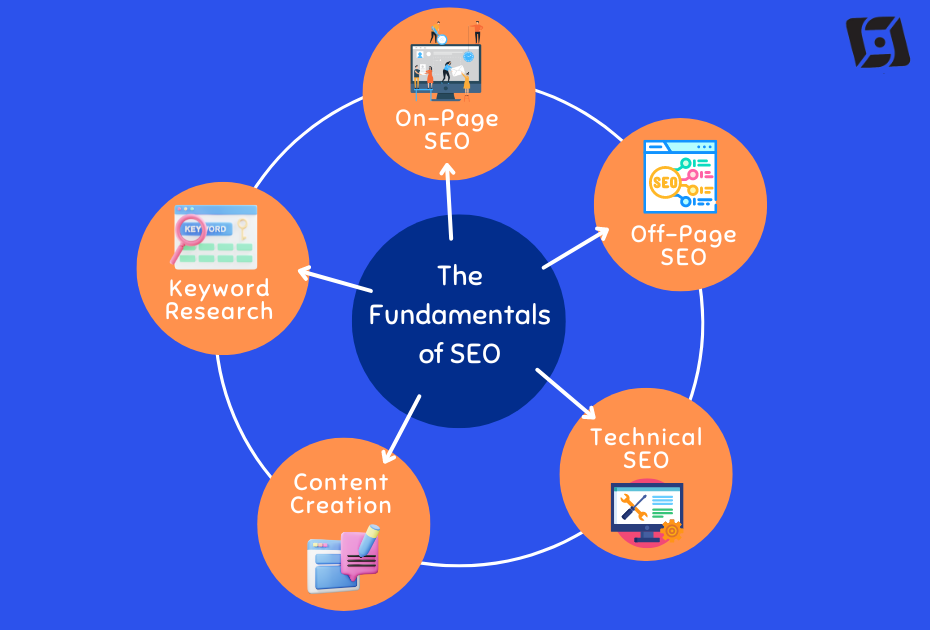
Keyword Research
- Importance: Keywords form the backbone of SEO. They represent the terms and phrases users enter into search engines when seeking information.
- Tools: Utilize tools like Google Keyword Planner, Ahrefs, or SEMrush to discover relevant keywords with high search volumes and low competition.
- Implementation: After identifying your target keywords, seamlessly integrate them into your content, including titles, headings, meta descriptions, and body text.
On-Page SEO
- Title Tags: A title tag is one of the most crucial on-page SEO elements. It should be unique, informative, and incorporate your primary keyword.
- Meta Descriptions: These brief snippets appear under your title in search engine results pages (SERPs) and should entice users to click through to your site. Include a compelling description and your target keyword.
- Header Tags (H1, H2, H3, etc.): Use header tags to structure your content, making it easier for both users and search engines to navigate. Your H1 should include the primary keyword, with subsequent headers organizing content logically.
- Content Quality: High-quality, relevant, and informative content is key.
- Image Optimization: Add alt text to images to help search engines understand their content. Additionally, this improves accessibility for those with disabilities.
- Internal Linking: To improve navigation and efficiently distribute page authority, link to other pertinent pages on your website.
Off-Page SEO
- Backlinks: Backlinks from other websites are a critical off-page SEO factor. Rich backlinks from trustworthy websites indicate to search engines that your content is important and trustworthy.
- Social Signals: While social media activity doesn’t directly impact SEO, it can increase brand awareness and drive traffic to your site, indirectly enhancing your SEO efforts.
- Guest Blogging: Writing guest posts for reputable websites in your industry can help you earn valuable backlinks and boost your site’s authority.
Technical SEO
- Site Speed: Both SEO and the user experience depend on a site that loads quickly. Make use of resources such as Google PageSpeed Insights to find and address problems that might be influencing the functionality of your website.
- Mobile-Friendliness: With more users accessing the web via mobile devices, a mobile-friendly website is crucial. Implement responsive design and ensure your site performs well across all devices.
- XML Sitemap: An XML sitemap aids search engines in indexing your site more efficiently. Ensure that your sitemap is up to date and that search engines such as Google and Bing have received it.
- Robots.txt: Use a robots.txt file to guide search engine crawlers and prevent them from indexing pages that don’t need to appear in search results.
- SSL Certificate: Security is a ranking factor, and having an SSL certificate (indicated by HTTPS) can boost your SEO while ensuring your users’ data is protected.
Content Creation
- Blogging: Regularly publishing fresh, relevant content on your blog can engage your audience and attract more visitors. Focus on creating in-depth, long-form content that addresses common industry questions.
- Multimedia Content: Diversify your content with videos, infographics, podcasts, and more to cater to different audience preferences.
- User Intent: Understand the intent behind search queries and create content that meets those needs, whether users are looking for information, making a purchase, or seeking entertainment.
How Does SEO Work?
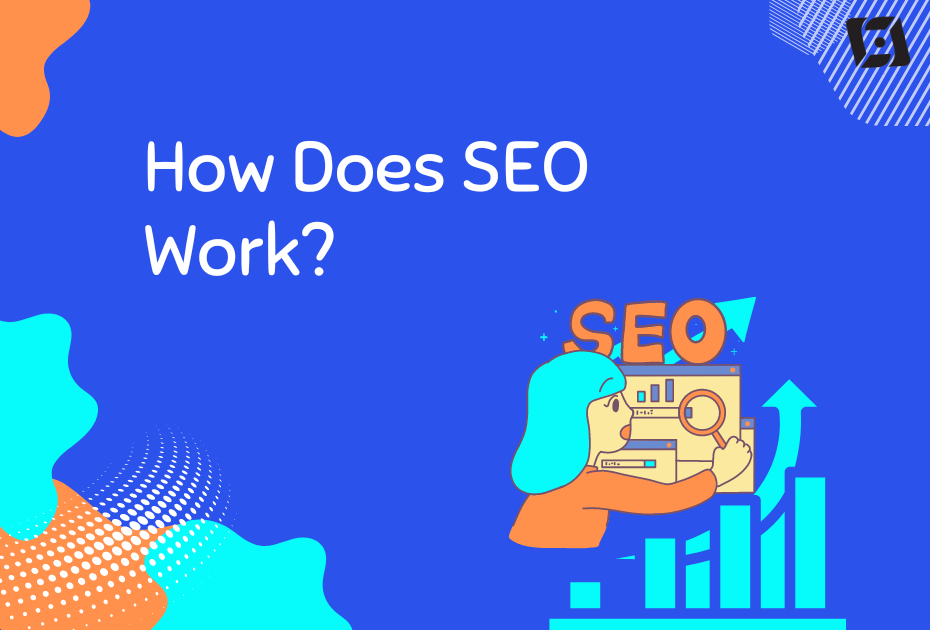
SEO improves a website’s ranking and visibility by optimizing its content, conducting keyword research, and earning inbound links. Although you can generally see some effects on the SERP after a web page is crawled and indexed, achieving full results from SEO efforts can take several months.
Rankings
Search engines use rankings to determine the position of a web page in the SERPs. Rankings start from position zero and continue through the total number of search results for a query, with each page holding one rank at a time. Over time, a page’s ranking can change due to factors like the page’s age, competition in the SERP, or updates to the search engine’s algorithms.
Visibility
Visibility is the measure of how prominently a domain appears in search engine results. Lower visibility means the domain is not showing up for many relevant search queries, while higher visibility indicates a strong presence in search results.
How Search Engines Work
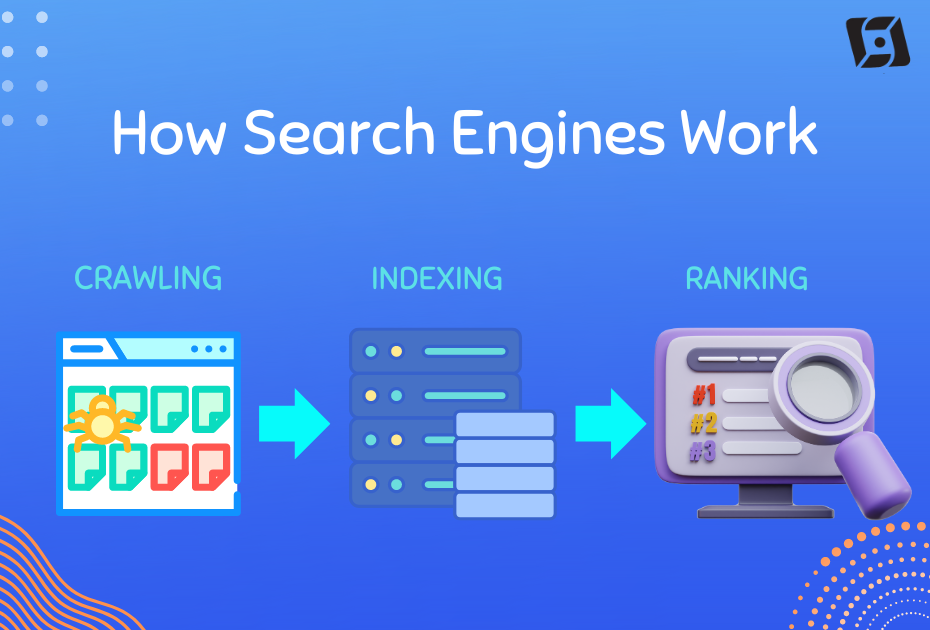
For SEO to be efficient, it is vital to comprehend how search engines work. We’ll focus primarily on Google, which dominates the search engine market and drives the majority of web traffic. However, these principles are broadly applicable, as other search engines follow similar rules.
Google’s Dominance in Web Traffic
Google is the primary search engine for most internet users, making it a central focus for SEO strategies.
Cross-Search Engine Optimization
Optimizing for Google often benefits your site’s performance on other search engines as well, given the similarities in their algorithms.
The Three-Step Process
- Crawling
Web crawlers, often known as bots, are programs used by search engines to crawl the web. These bots discover new pages, follow links, and collect data about existing content. This ongoing process ensures that search engines stay up-to-date with the ever-evolving internet landscape. - Indexing
A page is crawled, examined, and then saved in an enormous database called the index. This index serves as a comprehensive reference for the search engine when generating search results. - Ranking
The final step is ranking. In this phase, search engines assess websites based on various factors, including content relevance, quality, link profiles, and technical elements like mobile optimization. The search engine searches its index when a user types a query in order to provide the best and most relevant results.
Google’s Ranking Factors
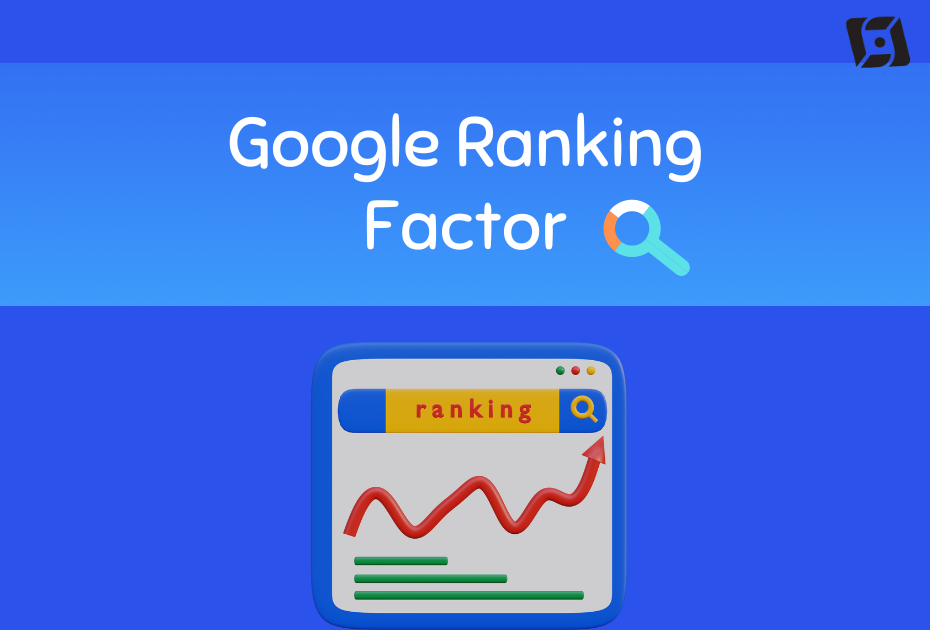
Optimizing your online presence begins with understanding the factors that influence how search engines, particularly Google, rank websites. Although there are over 200 known Google ranking factors, focusing on the most impactful ones can significantly enhance your site’s visibility in search results.
- High-Quality Content: The cornerstone of SEO, high-quality content is crucial for ranking well. Google gives users-focused content that is valuable, original, and new top priority.
- Backlinks: Often considered votes of confidence, backlinks from reputable sites signal to Google the trustworthiness and authority of your content. Explore strategies for acquiring quality backlinks.
- Search Intent and Content Relevancy: Matching your content to users’ search intent makes sure that your pages fulfill their requirements and appear higher in search results.
- Website Loading Speed: The Core Web Vitals change from Google has made site performance an important ranking element. Google gives higher results to websites that load faster because they offer a better user experience.
- Mobile Friendliness: In the mobile-first world of today, a responsive website is imperative. Mobile-friendly websites rank higher on Google.
- Domain Authority: A measure of the effectiveness and search engine ranking of your website, domain authority is influenced by the quality of your content and backlinks.
- Keyword Optimization: Google can better comprehend and rank your pages for relevant queries if you include keywords in your content, titles, meta descriptions, and alt texts.
- Website Structure: Better indexing and ranking by search engines are made possible by a clearly hierarchy-based website.
- Website Security: Because HTTPS secure websites provide a more secure surfing experience, Google favors secure websites that use it.
- On-page Experience: Google learns about the user experience on your website through metrics like click-through rate, bounce rate, and dwell duration, which affect your rankings.
While these are key ranking factors, remember that SEO is a dynamic field with constantly evolving best practices. Maintaining and raising your search engine rankings requires being aware of these changes and making necessary adjustments.
Google’s E-E-A-T Guidelines
To excel at SEO, understanding Google’s E-E-A-T (Experience, Expertise, Authority, Trustworthiness) guidelines is crucial. Google uses these criteria, alongside algorithms, to evaluate content quality. Originally known as E-A-T, Google added “Experience” in 2022, emphasizing the importance of first-hand knowledge in content creation.
Quality Raters assess content based on these factors:
- Experience: Does the creator have direct experience with the topic? Content with genuine insights is more valuable.
- Expertise: Is the author knowledgeable about the subject matter? Expertise is demonstrated through accuracy and depth.
- Authority: Does the website have a reputation for being a reliable source? With time and consistently excellent material, authority is developed.
- Trustworthiness: Can users trust the content and the site? Trust is earned through transparency, accuracy, and ethical practices.
Tips for Improving Your E-E-A-T Score
- Showcase First-Hand Experience: Demonstrate your industry expertise by listing credentials, using original images, and sharing personal insights. Authenticity is key.
- Conduct Thorough Research: Make sure the information you provide is correct and thoroughly studied. Include expert opinions, interviews, and correct information tailored to your audience.
- Be Comprehensive: Don’t skimp on details. Provide thorough answers and in-depth content to satisfy your readers fully.
- Stick to Your Expertise: Focus on your brand’s core topics. Avoid diverging into unrelated content, which can dilute your authority.
- Address Audience Needs: Understand your audience’s concerns and address them directly. Teach topics in an accessible and relevant manner to build trust and authority.
- Build Trust: Establish credibility by securing your site with an SSL certificate, providing clear contact details, and showcasing genuine customer reviews.
SEO and Google Algorithm Updates
Google uses a secret algorithm to rank websites in its search results, and while it’s true that the algorithm is constantly evolving, the key is to focus on maintaining strong SEO practices. Google frequently rolls out “core updates” several times a year to improve the search experience—details of which can be found in my Google algorithm cheat sheet.
With so many updates, it’s more important to concentrate on adhering to SEO best practices rather than worrying about every algorithm change. Your primary focus should be on creating high-quality content, using relevant keywords, and building reputable backlink relationships.
Avoid the temptation to “game the system” with Google’s algorithms, as one of the main reasons for these continuous updates is to filter out those who attempt to manipulate the system. Overemphasizing the algorithm rather than your content could end up harming your rankings.
Frequently Asked Questions About the SEO
Is SEO Really Worth It?
Absolutely, SEO is worth the investment. It helps increase organic traffic, improves brand visibility, and generates leads and sales over the long term. Even in an AI-integrated world, becoming an SEO expert is crucial, as human insight and strategy remain pivotal for effective optimization.
Do Small Businesses Need SEO?
Yes, small businesses can benefit significantly from SEO. Without depending entirely on paid advertising, it enables them to compete with more established businesses, connect with their target market, and draw in organic visitors.
Looking For Search Engine Optimization (SEO) Services: Contact Us

